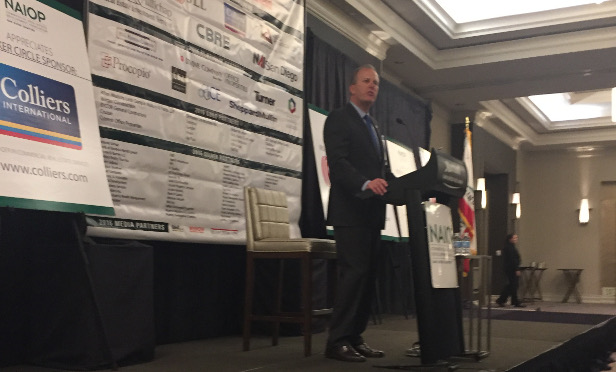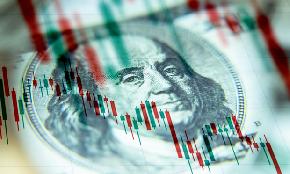 Faulconer: “My big push is to update our community plans and dramatically shorten the time it takes to update them.”
Faulconer: “My big push is to update our community plans and dramatically shorten the time it takes to update them.”
SAN DIEGO—In order to provide opportunities for the innovation sector to grow, San Diego must update its community plans—some of which are more than 25 years old—Mayor Kevin Faulconer said during NAIOP’s “Lunch with the Mayor” program Thursday. The mayor spoke to NAIOP members about affordable housing, fees and taxes, Climate Action Plan mandates, water- and energy-reduction mandates, economic-development strategies, future development opportunities, job creation, economic-development infrastructure, civic initiatives for San Diego’s future and streamlining city processes.
Faulconer said $.5 billion has been allocated for infrastructure over the next five years and that 1,000 miles of San Diego roads will be paved during that time. He is also in factor of the large turnover in department heads that has taken place since he’s been in office, saying fresh leadership is good for the city.
The fact that San Diego was named a Smart City and that it has a thriving craft-beer industry is earning the region positive recognition, said Faulconer. “The San Diego economy is doing very, very good things.” He stated his commitment to continue growing jobs and said the commitment to infrastructure is working. “Ten years ago, San Diego was on the brink of bankruptcy, but it is strong now because of all the work we have fought for in financial reforms.”
The City is also focused on common-sense ideas: clean air, 50 new parks built in San Diego over the next five years and the “Housing for Heroes” program, which gets homeless veterans off the street and into good housing. “Our goal is to get 1,000 veterans off the street over the next five years, and the City Council just approved $5 million for that.”
Addressing the Chargers issue, Faulconer said he believes we can keep an NFL team in San Diego, keeping tourism in place—like Petco Park did for the Padres. When an attendee asked him what he feels is a fair financial burden on the taxpayers to keep the Chargers here by building a new stadium, Faulconer answered that a fair solution would be that one-third of the cost would be paid by the taxpayers, one-third by the NFL and one-third by the Chargers. “We have to have the right balance.” Another attendee asked what would be the best usage of Qualcomm Stadium if the Chargers moved to a new Downtown stadium, Faulconer said, “We must do something special with Qualcomm. We need to open up the property to the river, to the public.”
Another attendee asked if there was an opportunity to look at a general plan for innovation, and Faulconer said, “We have to update our community plans—some are 25 years old and older. We are moving forward on five community-plan updates this year and five more next year. We have no clear path if we don’t update them. My big push is to update our community plans and dramatically shorten the time it takes to update them.”
Regarding the Climate Action Plan, Faulconer said 47% of San Diego’s power is renewable energy; the goal is 100%. This is partially being achieve with no solar technology and no restraints on rooftop solar. He added that the City will “grow our economy, but not at the expense of the environment.”
An attendee asked what the City is doing to keep more innovative companies like Illumina here, and Faulconer said “surety of process” is key to attracting and retaining innovative companies. “We are in the customer-service business in the City.”
Answering a question about our relationship with Mexico, Faulconer cited the positive economic benefits of San Diego having a good relationship with Mexico, encouraging trade between the two countries and viewing the two markets as one big mega-region.

















 Copyright © 2024 ALM Global, LLC. All Rights Reserved.
Copyright © 2024 ALM Global, LLC. All Rights Reserved.